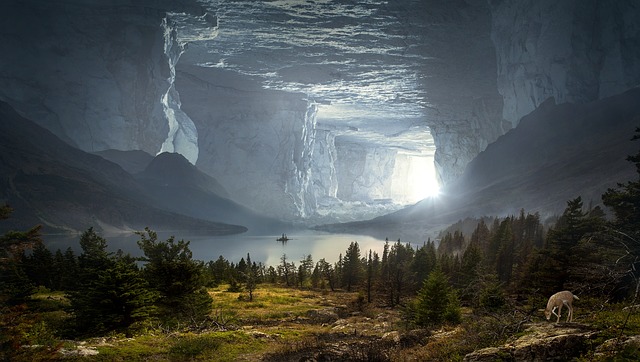
If you think world building is limited to science fiction or fantasy writers, let’s pop that balloon immediately. Developing an imaginary world full of historical, geological, and ecological elements isn’t restricted to the sci-fi or fantasy world. Other genres depend on a world that matches what your readers are interested in exploring deeper.
When you build another world, you’re responsible for creating everything from the flora and fauna surviving in this new universe to a variety of species, including man, who inhabit this universe.
But when you hear or read "world building," what do you think?
Many automatically think of Star Wars, Harry Potter, Game of Thrones, or Lord of the Rings. They all have amazing worlds built around what an alternate/future universe might look like. One goes far out in space, others cover an alternate universe on Earth, and another delves deeper into Earth, showing us an entire world we never dreamed of.
Do you instantly wonder about the differences between our world and these new worlds? Readers are drawn to a novel that creates an entire new world where they can experience unexpected places to live, work, and play.
Remember, as you create your new world, you have immense power. It’s up to you to create an interesting and engaging world, but more importantly… it must be believable. The more intimately you know your novel’s world, down to the minutest detail, the richer and more compelling your writing will be.
ProWritingAid has several articles covering world building that you may find helpful. Search our blog for "world building" to find a few articles that will help you boost your writing in this area.
First rule of world building: Creating a new world goes way beyond mere settings
When writing for sci-fi or fantasy, simply setting a particular scene won’t cover it. Worlds comprise both written and unwritten laws, some kind of governance or regulatory body, a complete history, and its geography, geology, ecology, etc. You also must know the prominent cultural norms, their philosophy, and mythology. Don’t forget technology, science, and medical accomplishments. And that’s just the big stuff.
What do your characters eat? Where do they live? What jobs do they have? What transportation do they use? What is their currency like? If they don’t have currency, what type of economic system do they use? If they don’t have electricity, how do they heat and cool their living quarters? So many details…
If you're writing for other genres, you will still be setting your story in a particular time and location. Whether it's historical, present-day or future will affect the amount of exposition required, so it's a good idea to think about whether your readers will automatically know the answers to these questions.
Second rule of world building: Use other authors’ worlds to inspire your world
Several authors have based pieces and parts of their alternate universes on Greek or Roman mythology. And others use components from fairy tales and other stories to create new worlds full of elves, trolls, dragons, fairies, and more.
Read sci-fi and fantasy novels. Watch movies like How to Train Your Dragon or Blade Runner to analyze how someone created a new world. Movies are a great source of ideas because you have so many from which to choose.
Spend time in other worlds and make notes about what you like. Then mix and match these different ideas to create something uniquely yours.
Third rule of world building: Don’t make this new world your story’s focus
You might go down a rabbit hole chasing after elements of your new world, but your readers need not know everything about it. Your world might take center stage in particular scenes in your story, but it shouldn’t be the ultimate focus.
Carefully consider each time you highlight something in your new world and ask yourself:
- Does this move the story along?
- Does it develop the main characters in any way?
- Or does it feed my need to exploit how hard I worked to develop this new world?
Based on your answers, you might cut it or keep it.
Final thoughts
It helps most writers to have a map of the new world. You need not be a professional map maker or an artist to sketch out your world building ideas. Just try to get a basic outline of your world and add detail to flesh it out.
Study the masters. If you're writing sci-fi, check out our seminal article, The Essential Reading List: Sci-Fi. You won’t regret reading anything on this list.
Let us know in the comments below how you construct new worlds that readers love.

